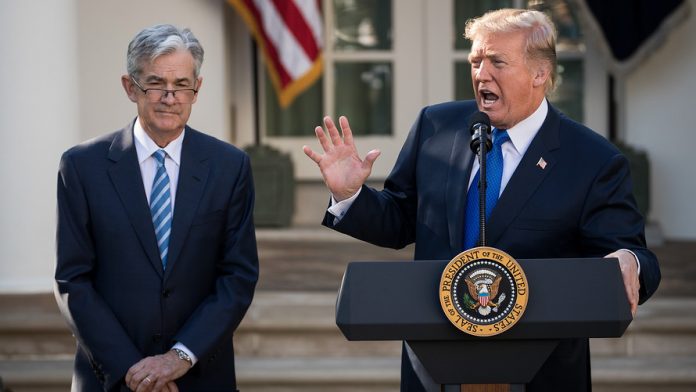In an early morning tweet today, President Trump called on the Fed to cut rates.
“Australia’s Central Bank cut interest rates and stated it will most likely further ease in order to make up for China’s Coronavirus situation and slowdown. They reduced to 0.5%, a record low. Other countries are doing the same thing, if not more so,” Trump tweeted.
“Our Federal Reserve has us paying higher rates than many others, when we should be paying less,” he advised.
“Tough on our exporters and puts the USA at a competitive disadvantage. Must be the other way around. Should ease and cut rate big. Jerome Powell led Federal Reserve has called it wrong from day one. Sad!”
The coronavirus outbreak, though not an immediate danger to Americans in POTUS’s eyes, has certainly cast a pall on the market. Investors the world over are expecting poor first-quarter numbers from American companies.
A few hours after Trump’s tweet, Fed Chairman Jerome Powell seemed to heed the President’s advice. Powell announced a surprise 50-basis point rate cut, causing stocks to initially spike before retreating back down. It was the first non-planned reduction since December 2008 during the financial crisis.
“The coronavirus poses evolving risks to economic activity,” the Fed said.
“In light of these risks and in support of achieving its maximum employment and price stability goals, the Federal Open Market Committee decided today to lower the target range for the federal funds rate.”
Shortly thereafter, Powell held a news conference in which he further explained the Fed’s position.
“[We] saw a risk to the economy and chose to act,” Powell said.
“The magnitude and persistence of the overall effect on the U.S. economy remain highly uncertain and the situation remains a fluid one. Against this background, the committee judged that the risks to the U.S. outlook have changed materially. In response, we have eased the stance of monetary policy to provide some more support to the economy.”
And though Trump got a rate cut, it wasn’t necessarily the one he wanted.
“The Federal Reserve is cutting but must further ease and, most importantly, come into line with other countries/competitors,” the President tweeted.
“We are not playing on a level field. Not fair to USA. It is finally time for the Federal Reserve to LEAD. More easing and cutting!”
Last Sunday, Goldman Sachs economists told clients to expect a 50-basis point reduction prior to or during the Fed’s March meeting; a prediction that turned out to be true. The firm also believes another 50-basis point cut could be coming by the end of the year.
Most alarmingly, though, Goldman says that rates in the U.S. could even hit zero – something we haven’t seen since the last recession.
JPMorgan Chase has a similar stance.
“One of the recurring themes in optimal monetary policy near the zero lower bound is that when growth risks occur with policy rates within the neighborhood of zero, then the central bank should act early and aggressively,” Michael Feroli, JPMorgan’s chief U.S. economist, said in a note.
“This suggests to us that there is a reasonable chance (we subjectively put the odds at one-in-three) that policy rates return to zero before the end of the summer.”
If that happens, the market will likely rise in response. Cheaper debt usually helps corporate balance sheets short-term.
But long-term, the Fed (along with the central banks of the world) would only be inflating the worldwide debt bubble that’s bound to pop.
That’s not to say a “zero rate” America will pop the debt bubble. It could be another 5 years before that happens.
However, bulls will eventually start to realize that getting fat on low rates is a bad idea. Today, shortly after the Fed’s 50-basis point cut, the market slumped again, signaling that an “awakening” among investors might finally be happening.







